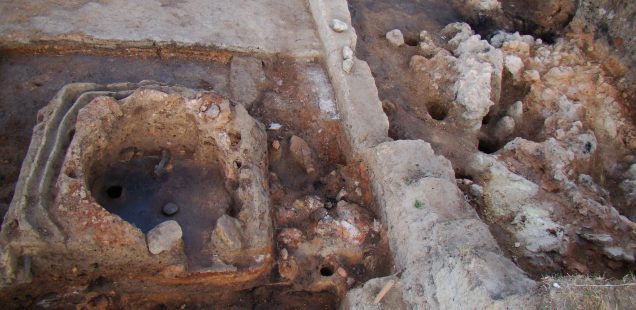7,000 years old Copper Age Kilns Unearthed in Bulgaria
Bulgarian archaeology records that two kilns were dated between 4800 and 4600 B.C. A team of researchers from the Ruse Regional Museum of History were discovered on the Bazovets Settlement Mound near the Danube River in northeastern Bulgaria.

In the excavation season, 2019 one of the two almost 7,000-year-old prehistoric ovens or furnaces was first partially excavated.
In recent excavations on the Bazovets Settlement Mound, it was fully exposed and a second kiln from the same Chalcolithic facility has been found, the Ruse Regional Museum of History has announced.
The 2020 archaeological excavations at the Copper Age settlement in question took place in September and were led by archaeologist Dimitar Chernakov from the Ruse Regional Museum of History, and his deputy, archaeologist Irena Ruseva from the Svilengrad Museum of History, with archaeologists from the Dobrich Regional Museum of History and the Veliko Tarnovo University “St. Cyril and St. Methodius” also participating.
A total of 57 archaeological artefacts from the said Early Chalcolithic period (4,800 – 4,600 BC) have been found during the latest excavations at the Bazovets Settlement Mound.


These include artefacts made of flint, animal bones, horns, and ceramics – including fragments from anthropomorphic and zoomorphic figurines. As a result of the research of the Early Copper Age archaeological layer on the site, the archaeologists discovered that the easternmost periphery of the prehistoric settlement was used for manufacturing.
The second of the prehistoric kilns, which was found during the 2020 excavations, had two chambers, a lower chamber for the burning to generate heat, and an upper chamber for the baking of the pottery items.
The Early Chalcolithic kiln was 1.2 meters long, and 1 meter wide, and it was made of wood wattle plastered with a thick layer of clay from the inside and outside.
The opening of the kiln was on its southeastern side, and it was closed with three flat stones which have been discovered right next to it.
The kiln had a groove that would allow for the regulating of the heating temperature, a type of furnaces for the baking of clay that would also be used in later archaeological eras, the Ruse Museum of History notes.
Above the two kilns, the archaeologists have discovered the ruins of a rectangular building with a north-south orientation.
Right next to its entrance, there was a small room seemingly used for food storage where the researchers have unearthed traces from food residues such as animal bones and lots of shells from freshwater mollusks.
In addition to the nearly 7,000-year-old Early Chalcolithic pottery-making kilns, during their 2020 excavations at the Bazovets Settlement Mound, the archaeologists have also found and started to unearth a prehistoric building which was even older than the kilns themselves.

The prehistoric building in question was built of wood and clay and was destroyed by a large fire.
In its southern part, the archaeologists have found several intact pottery vessels and bases as well as a horn tool which were placed on a podium. They are going to continue researching the prehistoric building further during their next excavations of the Bazovets Settlement Mound.
In the Neolithic and Chalcolithic, the territory of today’s Bulgaria and much of the rest of the Balkans, for instance, today’s Romania and Serbia, saw the rise of Europe’s first civilization, the prehistoric civilization of the Lower Danube Valley and Western coast of the Black Sea.
This prehistoric civilization from the Neolithic and Chalcolithic, which had the world’s oldest gold, Europe’s oldest town, and seemingly some of the earliest forms of pre-alphabetic writing, is referred to some scholars as “Old Europe”. It predates the famous civilizations of Minoan Crete, Mycenaean Greece, Ancient Egypt and Ancient Mesopotamia by thousands of years.
